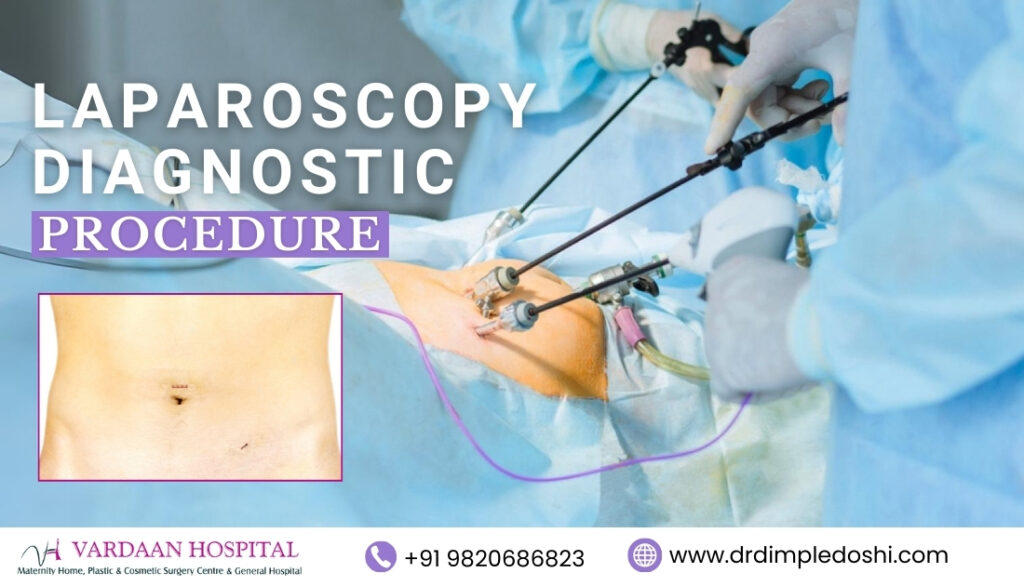
Laparoscopy; as a diagnostic procedure; has an important role in solving the dilemma faced by your doctor when you are undergoing treatment for say infertility; chronic pelvic pain or painful menses.
It not only serves as a diagnostic tool but also allows your clinician to treat you with precision once the cause of a particular disease or an illness is confirmed.
In the field of gynecology ; there are many problems faced by women which are not diagnosed by any routine tests; leaving your clinician clueless about the further treatment plans. Laparoscopy plays a role here; as it allows your doctor to directly view the organs;
Laparoscopy; also has a role to play in treatments like adhesiolysis or breaking adhesions; fulgurating the endometrial spots; removing the fibroids; removing the cysts ; tackling the painful spots inside etc . We can usually do this while performing the laparoscopy for diagnostic purpose.
Hans Christian Jacobaeus of Sweden performed the first laparoscopy in humans in 1910.
Laparo means “abdominal wall”; and scopy means “to see”. So the word laparoscopy means to see through the abdominal wall; and how s that possible ?
Laparoscope is a specially designed telescope which s like a long stick; about 1.1 cm in diameter and about 36 cm long; with an in built lens and a complex system inside; that can be connected to the endoscopic camera and to the monitor TV . This lets your surgeon look at the screen to perform surgery through key holes.
It is a modern way of looking at the intraabdominal organs without having to put a big cut on the abdomen.
Obviously the advantages are many;
Like:
1. Only small cuts on the belly; so better cosmesis
2. Less pain
3. Faster recovery
4. Early discharge and resumption of normal activities
Obviously; if the abdominal organs can be seen through the small holes; why to put a bigger incision?
If a surgery can be performed through tiny holes; why to enlarge the incision on the body ?
Laparoscopy is used as a diagnostic procedure for the following reasons:
1. To find out cause of infertility
2. To diagnose the cause of chronic pelvic pain
3. To diagnosis cause of severely painful periods or dysmenorrhea; painful sexual intercourse etc and to confirm the diagnosis of endometriosis.
4. To diagnose adhesions which cause long standing pain
5. To assess the patency of your fallopian tubes
6. To diagnosis genital or pelvic tuberculosis and PID or pelvic inflammatory disease
7. To assess the response to treatment like anti tuberculosis treatment and to see how much improvement is there.
8. To take biopsy to diagnose diseases like cancer; tuberculosis .
9. To diagnose congenital malformations of the genital tract
10 To diagnose ectopic pregnancy
11 To diagnose pelvic congestion
Out of all conditions;
1. Endometriosis is THE condition which s not detected on any other investigations but with laparoscopy done as a diagnostic procedure. It can be accurately diagnosed even in its early stages.
2. Adhesions;many times its not possible to diagnose adhesions with any other reports; but laparoscopy allows your doctor to see them and find out which body organs they are affecting.
3. Tuberculosis; genital or abdominal tuberculosis can be accurately diagnosed with laparoscopy. It allows your doctor to take biopsy and confirm the diagnosis of tuberculosis perfectly.
4. Diagnosis and staging of cancer.
As the infertility incidence is going high; laparoscopy done as a diagnostic procedure helps a lot to find out the cause of infertility and to understand women’s problems in a better and more precise way; as most of the gynae laparoscopies are done to find out the cause of infertility .
HOW IS LAPAROSCOPY DONE
Laparoscopy is called a key hole or a minimally invasive procedure done under anaesthesia; means you will not come to know about it once you are anesthetised.
Through a small incision near the belly button; the laparoscope is introduced after inflating the abdomen with co2 gas and the whole abdomen can be inspected.
Two or more smaller incisions; about half cm in size ; may be put; depending upon the pathology inside.
RECOVERY FROM LAPAROSCOPY DONE FOIR DIAGNOSTIC PURPOSE
Most of the time, one will be allowed sips of water after 4 to 6hours followed by light diet.
Once walking is done without the support; and the effect of anaesthesia is gone; one can be discharged.
HOW IS THE PAIN IF ONE UNDERGOES LAPAROSCOPY AS A DIAGNOSTIC PROCEDURE
With the availability of different methods of pain relief and newer anaesthesia drugs; the recovery s fast and pain is minimal if not absent; and one can comfortably start going to workplace the next day.